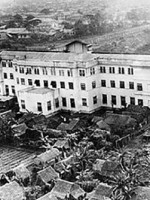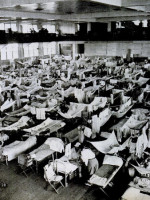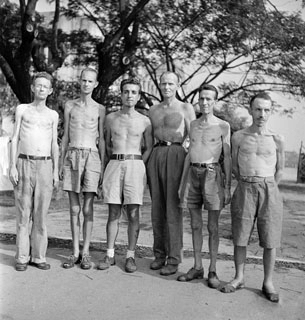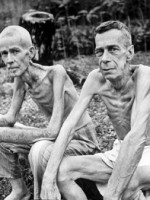 Gordon M. Bettles left Montana in 1906 and entered PMC, He quickly became a leader in a very talented class. As a senior, he received the honor of being the Cadet Battalion Commander. Commander Bettles was also an athlete and captained the football team. At Commencement he was awarded a degree in Civil Engineering and continued his education at the Colorado School of Mines. He oversaw the successful mining operations of the Yellow Tiger Mining Company in Goldfield, Nevada and introduced the use of an oil-driven compressor to mine the gold. In 1937, Bettles left his lucrative position at the Wiljobar Corporation in California and sailed to the Philippines. He was to become a part of a mining syndicate in Manila.
Gordon M. Bettles left Montana in 1906 and entered PMC, He quickly became a leader in a very talented class. As a senior, he received the honor of being the Cadet Battalion Commander. Commander Bettles was also an athlete and captained the football team. At Commencement he was awarded a degree in Civil Engineering and continued his education at the Colorado School of Mines. He oversaw the successful mining operations of the Yellow Tiger Mining Company in Goldfield, Nevada and introduced the use of an oil-driven compressor to mine the gold. In 1937, Bettles left his lucrative position at the Wiljobar Corporation in California and sailed to the Philippines. He was to become a part of a mining syndicate in Manila.
The bombings at Pearl Harbor in 1941 suddenly and dramatically changed the American attitude towards the Philippines. Since becoming a colony at the end of the Spanish American War, America’s approach was muddled. To many, the Philippine were an economic investment. This resulted in various large and small companies seeking the wealth of lumber, sugar and precious metals that the islands offered. After Pearl Harbor, the view was that Manila Bay was a large well-fortified port in the Pacific.
Within a month, Gordon Bettles and 6,000 other American and British civilians were interred in Japanese prison camps in Manila. The largest of these camps was Camp No. 1, University of Santo Tomása Internment Camp. The University campus consisted of 50 acres and was surrounded by high masonry walls on three sides an an ornate iron fence facing the main street. Inside the compound were the Main Building and an education building, both structures were 3-stores in height and contained offices, classrooms and a gymnasium. In addition, there were two light construction one-story buildings called the Annex and the Infirmary. Segregated by sex, thirty to fifty people were crowded into these small spaces. Bathrooms were scarce.
While there were many difficulties accommodating the growing number of internees, the Japanese absolved themselves of any responsibility. The Japanese did not consider the internees to be prisoners, but merely civilians held in protective custody. This left the internees struggling to find ways of feeding of themselves and dealing with a variety of health issues.
On June 14, 1943, Gordon M. Bettles, age 50, died of unknown causes while imprisoned. He was buried in the Manila North Cemetery.
Watch a photographic slideshow of the “University of Santo Tomas during the 2nd World War.”





